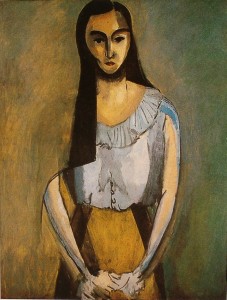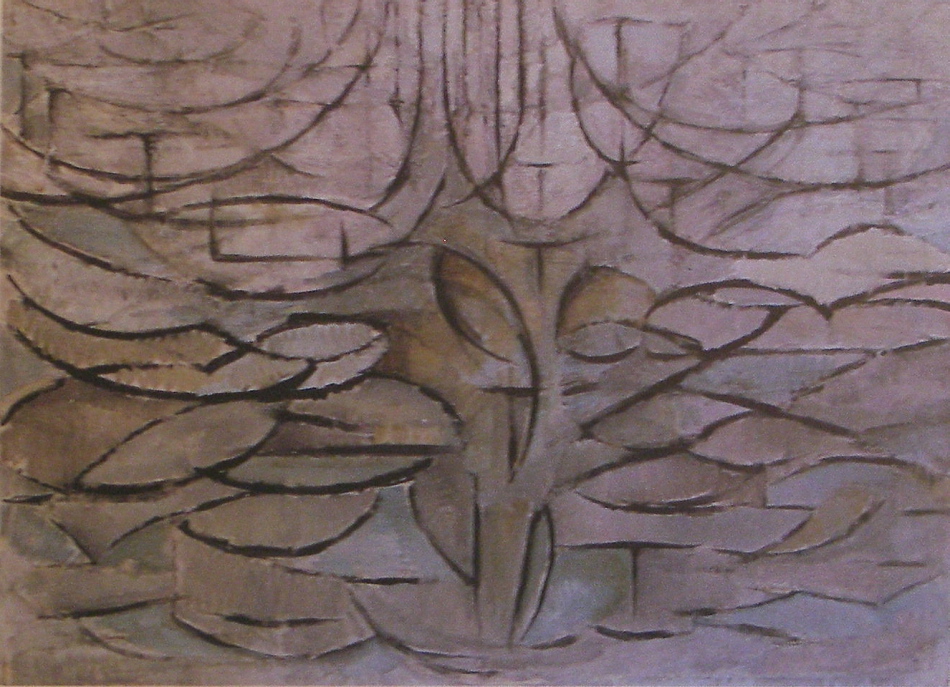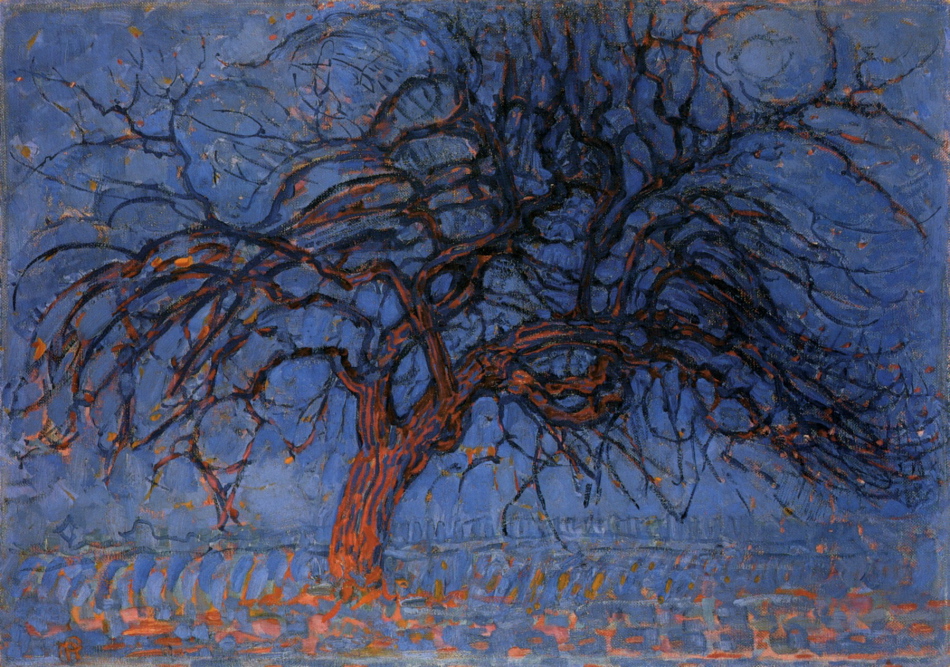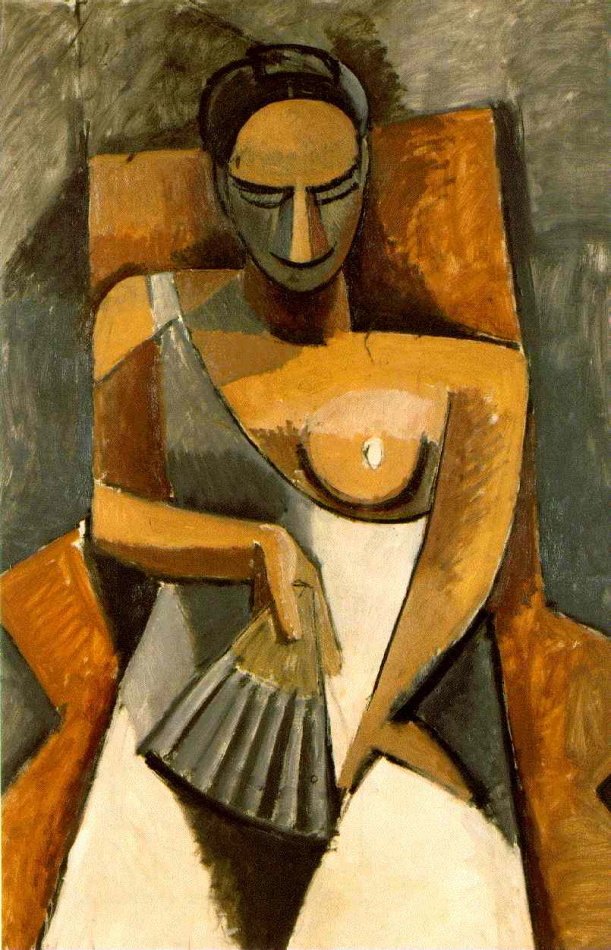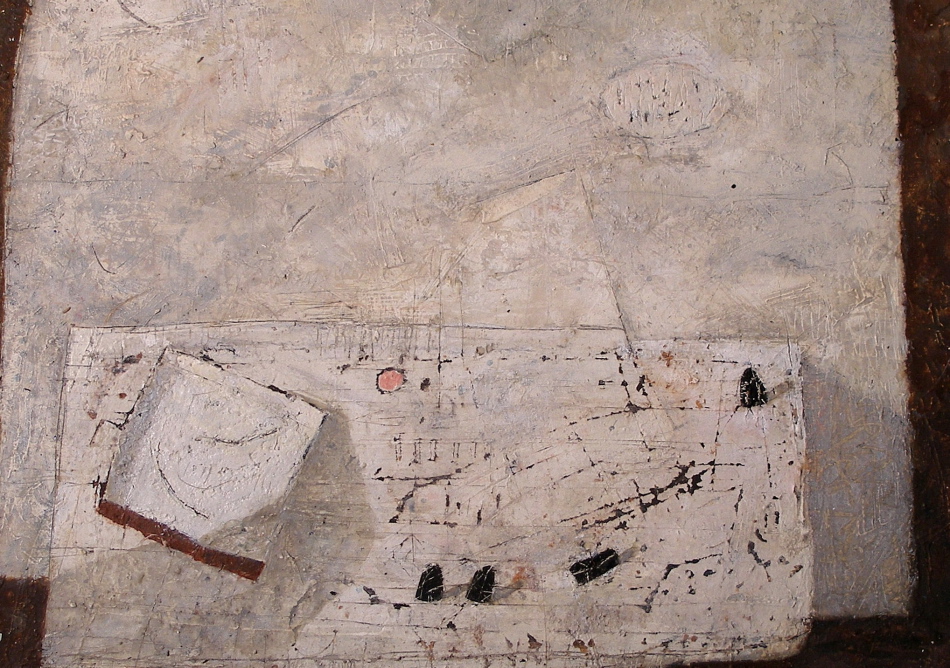This painting by Mondrian is an excellent example of master painters permitting influences to show in their work. Mondrian is acknowledging the importance of the great considerations of Cezanne, and his refinements are wonderful.
In this painting he provides a balance between traditional representation and the new approach to creating the sense of space. We see this at the bottom right where he provided a couple of angles and a horizontal line. These create planes in space which are meant to be felt more than seen. Can you feel the space in front of the table?
When we focus on the drapery we sense volume and space through the feeling of overlapping triangles which also are raised towards the picture plane. What impresses me is that diagonal which seems to come forth and how it also parallels beautifully with a second angle, the one connecting to the top of the blue ginger jar. Again try to feel the space between the parallels.
When these spatial considerations were coming to the forefront in painting something interesting also took hold. It was the idea of suggesting rather than explaining, and Mondrian displays this idea in how he treats the subject matter in the upper right of the picture.This is just one of the seeds that will eventually lead Mondrian towards abstraction.



